Morphological PropertiesFeatures evident with transmitted brightfield, oblique, darkfield, or reflected brightfield, darkfield, oblique, or grazing incident illumination. Projected ShapeThe projected shape of a particle is its transmitted light outline. These shapes can be very helpful in determining the type of particle present. Fibers are an obvious example. The shape alone eliminates a huge range of possibilities. One of the first steps in keying out a pollen grain is to classify its outline. Shape, as used here, is distinct from angularity or roundness. Those are details handled later in this section. . . . Fibers
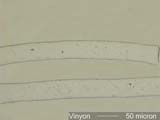
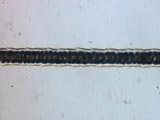
. . . CirclesCircles may be the result of a liquid deposition or a growth pattern. The projected shape is not sufficient to determine if the particle is spherical. 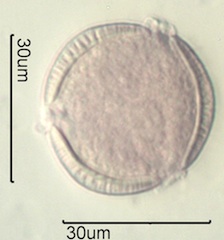
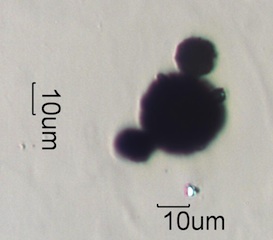
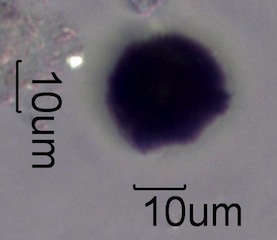
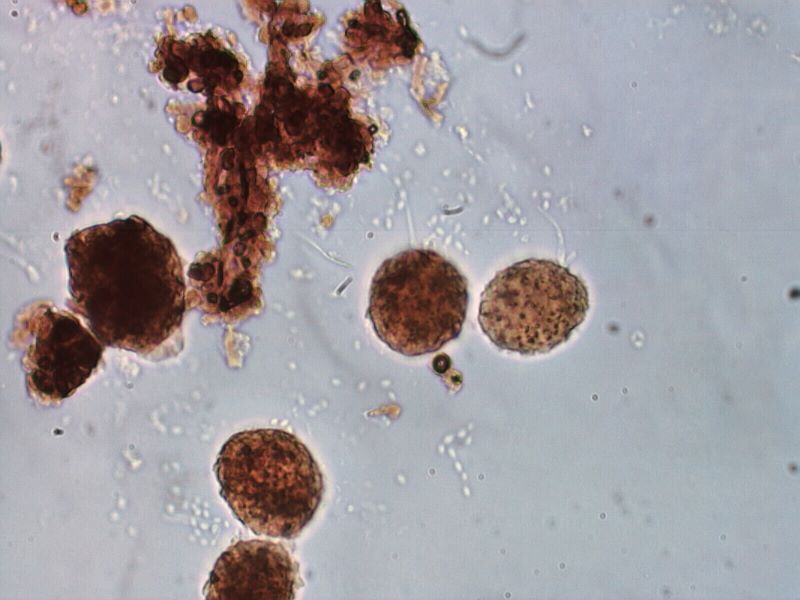
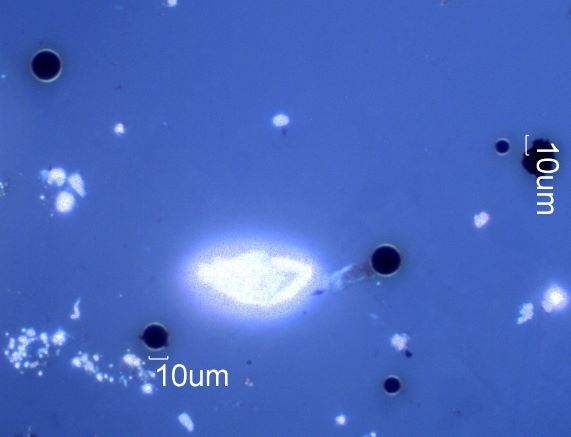
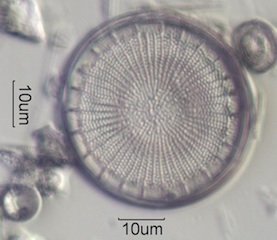
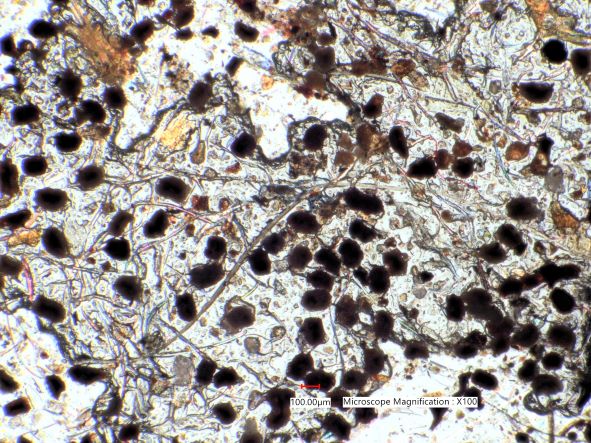
. . . PollensPollens come in many shapes and vary in size from a few micrometers to hundreds of micrometers. Most are in the range of 15 to 100 micrometers. The wall of a pollen grain consists of at least two distinct layers and as many as four distinct layers that may be separated by characteristic pillar structures. 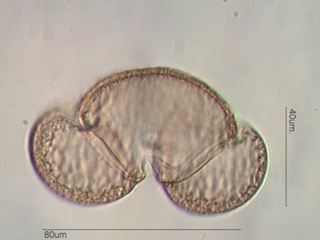
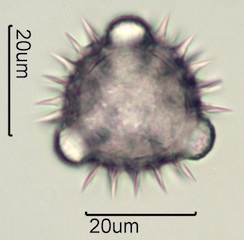
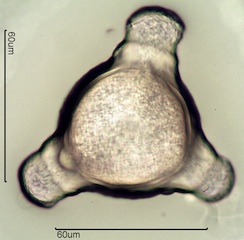
. . . SporesSpores come in many shapes but tend to be smaller than most pollens, often have a visible attachment point, and a single layer membrane wall. . . . DiatomsDiatoms can be divided into two broad types, Pennate and Centric, though there are also intermediate shapes. Pennate diatoms are elongated, have one axis much longer than the other two. Centric diatoms have one shorter axis and the other two are similar giving the diatom a circular or slightly ellipsoidal shape. 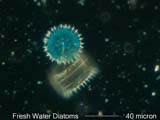

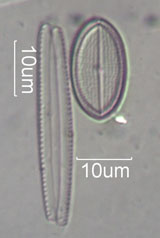
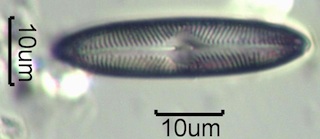
. . . Tapered CylindersTapered cylinders are created by a unidirectional force. In the case of tire wear it is the friction of the tire against the road. In the case of some combustion sources it is the shrinkage created by the advancing thermal gradient. 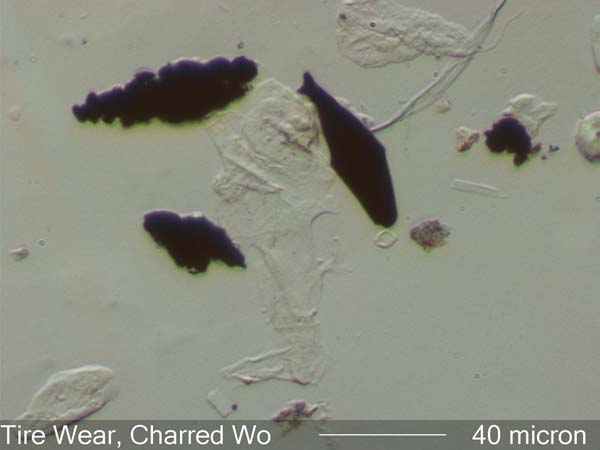
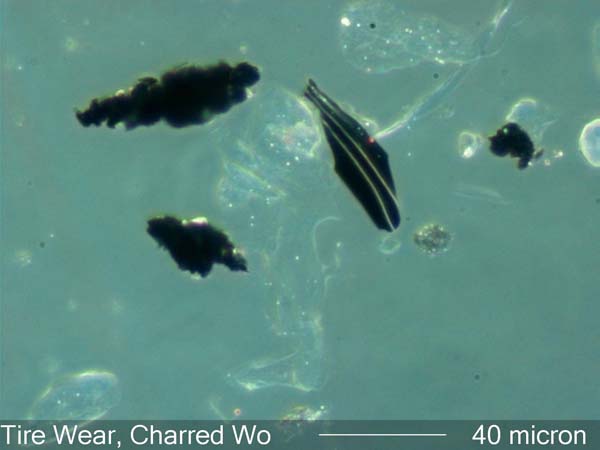
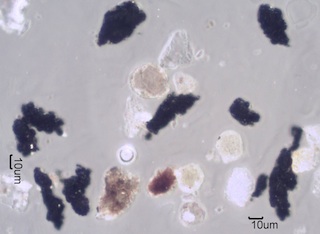

. . . GlobularGlobular particles are particles with internal and external centers of curvature over their surface. 
. . . Straight EdgesStraight edges indicate a linear structural element that may be a cleavage surface, a growth pattern or a linear force that generated the particle. 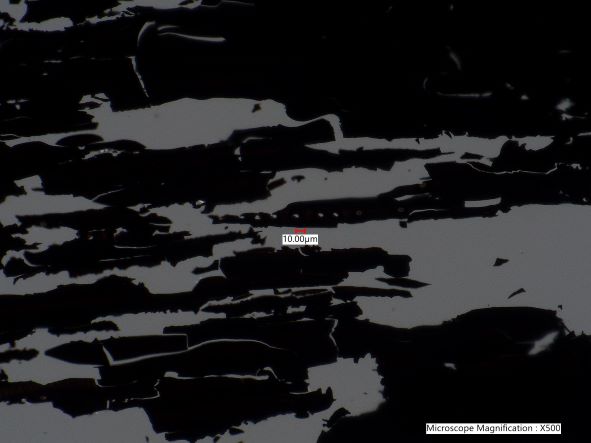
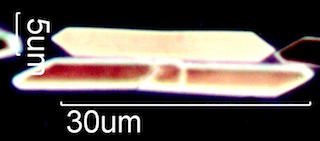


. . . RosettesRosettes are the result of growth outward from a central nucleation point. 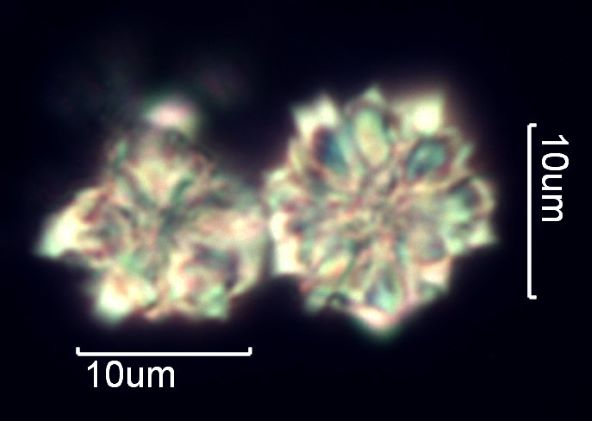
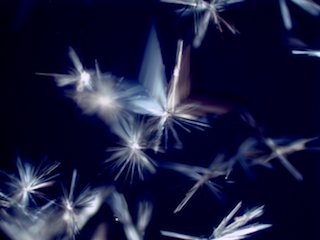
. . . DendritesDendrites are branching structures were the truck and the branches have the same diameter. These are common as a result of electrostatic deposition, some chemical reactions, and some skeletal crystal growth habits. 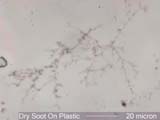
Reflected ShapeReflected darkfield illumination revels three dimensional aspects of a particles shape not evident with transmitted light. The magnetite particles below are an example. Charred biomass is another good example. Without reflected darkfield the identity of these opaque particles is in question. . . . Magnetite Crystals Erroded from Olivine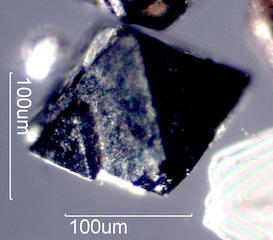
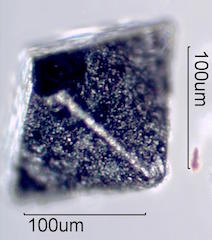
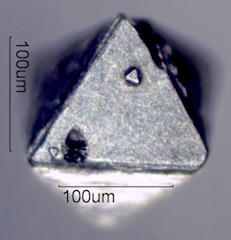
. . . Spheres from Circles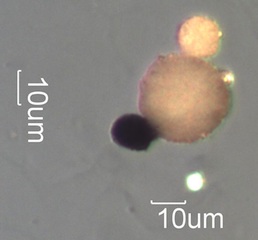
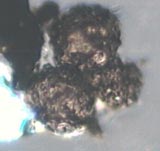
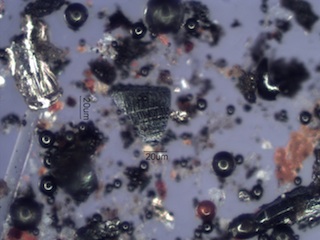
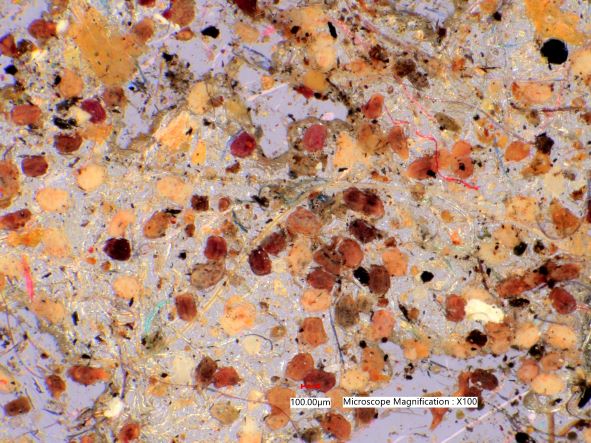
. . . Charred Wood

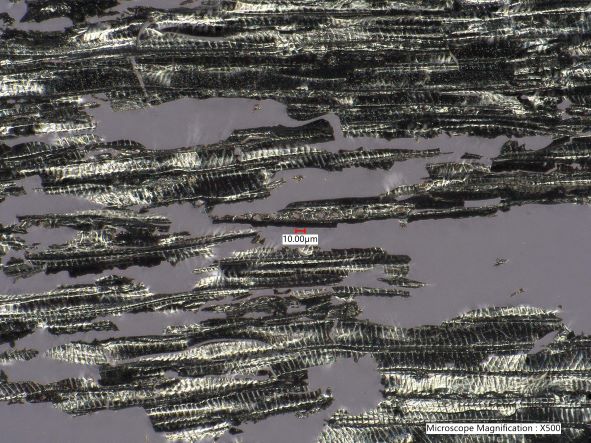
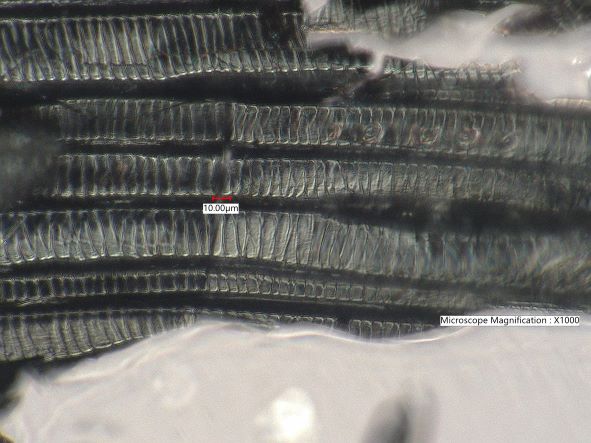
SizeSize is a far more complex issue than might seem to be the case. It is simple for a circle, but quickly becomes more difficult as the aspect ratio increases or the length of the perimeter significantly exceeds the perimeter of the enclosed circle. There are a number of standard approaches. If bridging is a concern then the longest dimension of the particle is its size. If the concern is a sieve size then then the larger of the two smallest dimensions is the size. The average of 6 or more Ferrets is another standard measure. Other measures include the diameter of the enclosing circle, the diameter of the enclosed circle, The projected intercept with a line at a fixed angle, . . . . Circles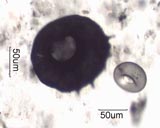

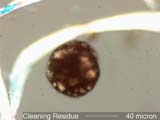 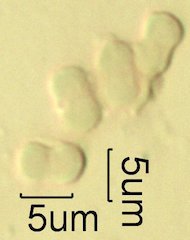
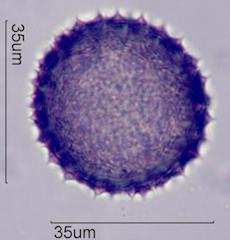
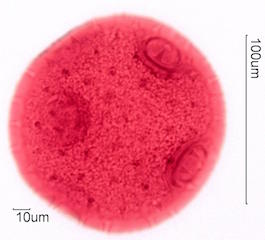 . . . EquantAspect Ratio, Length/WidthThe aspect ratio is the length divided by the width, maximum diameter (minimum circumscribed circle) divided by minimum diameter (maximum enclosed circle). . . . Textile Fibers, Typically Aspect Ratios over 25These are a few examples of Textile Fibers. There are many more in the Textile Fiber section of this atlas. 
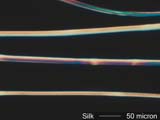
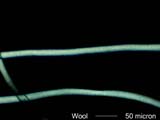
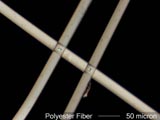
. . . Fibers by Definition, Aspect Ratios over 3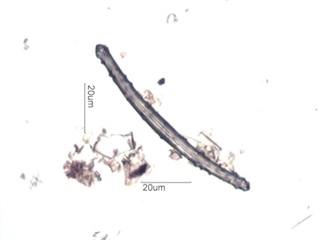
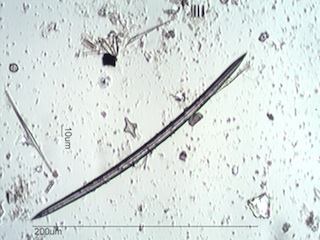

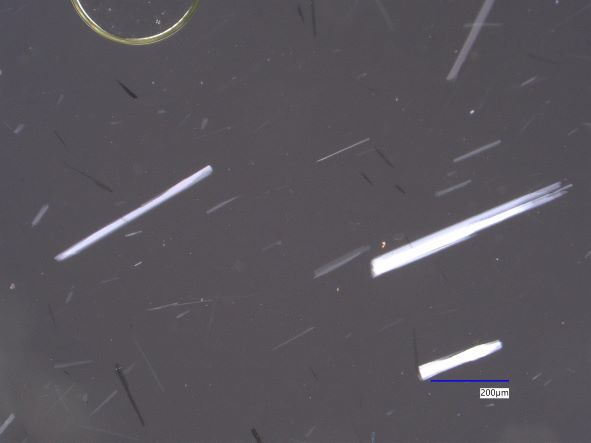
. . . Prisms. . . . . . Cleavage Prisms
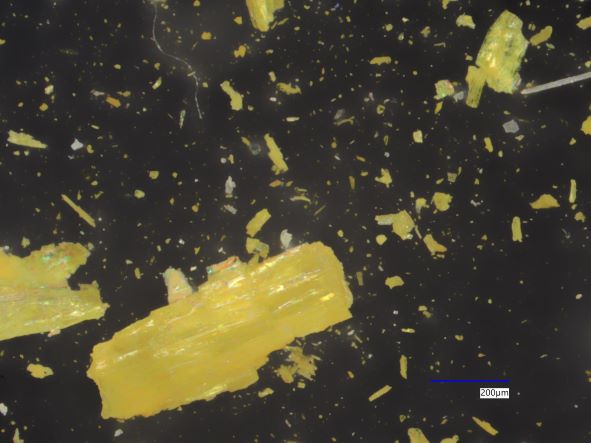
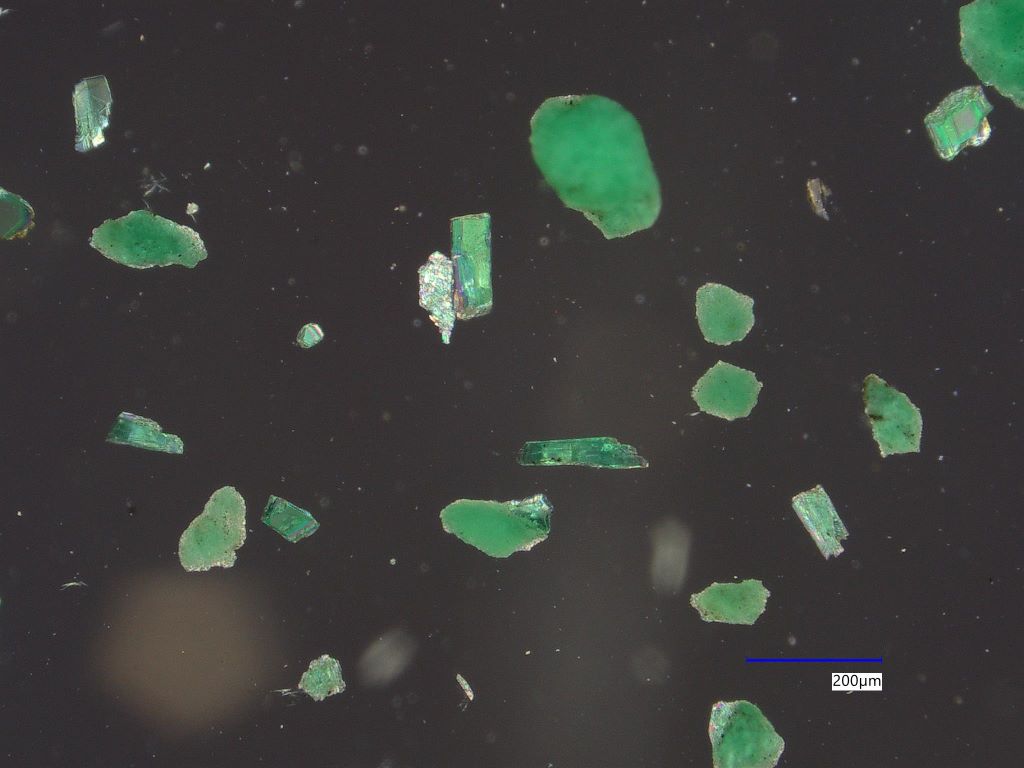
. . . . . . Pinicoids. . . . . . . . . Bipyramidal Calcium Oxalate PhytolithsThis habit shows parallel extinction with the alpha refractive index (1.490) parallel to the long axis an gamma (1.65) perpendicular to the long axis. Aspect ratio (Length/Width) is useful for separating the Pinus genus from diciduous plants also showing crystals with this habit. The relative thickness, shown by interference color, is another distinguishing feature. 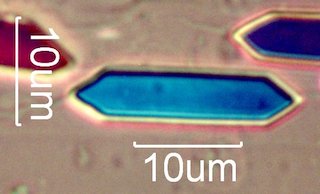
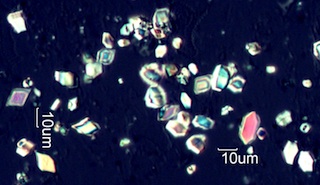
. . . . . . . . . . . . Pine, Aspect Ratio (L/W) Greater than 3



. . . . . . . . . . . . Wild Rose, Aspect Ratio (L/W) equal to or Less than 3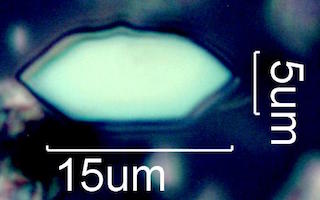
AnglesMany materials have characteristic angles. Calcite, florite, amphibols, halite, and wewilite are a few examples. This is not to be confused with angularity, the measure of abrasive errosion of a freshly fractured material. . . . CalciteCalcite has three cleavage planes and one parting plane. As a result, fragments of calcite typically exhibite just a few characteristic angles. 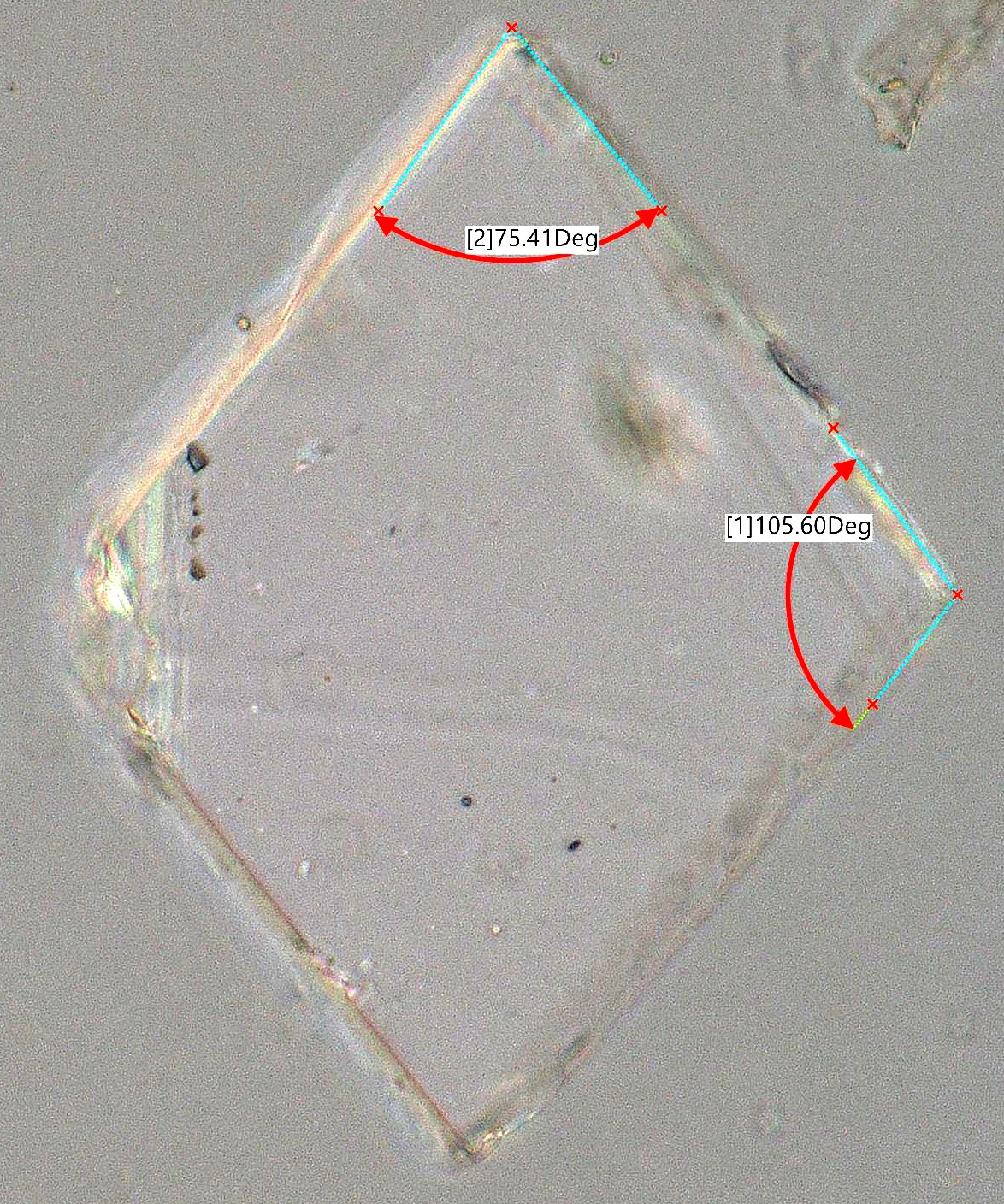
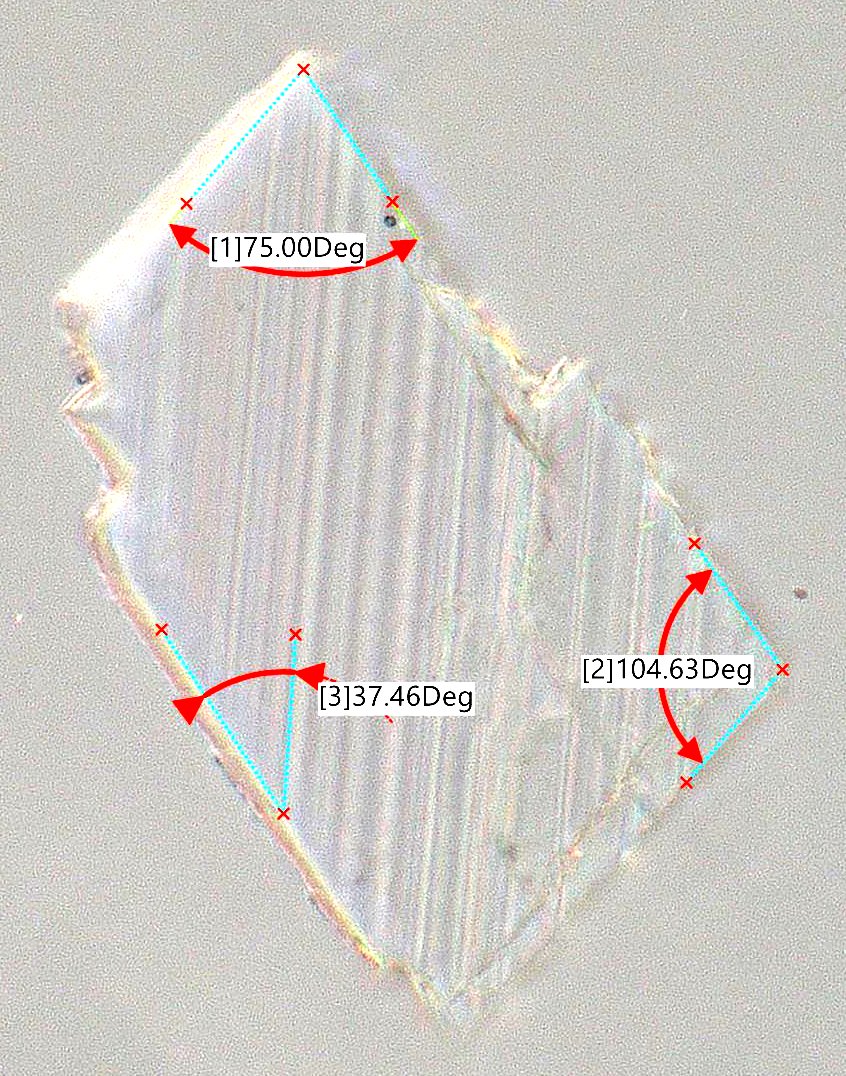
. . . Whewellite (Calcium Oxalate Monohydrate)Whewellite is one of three forms of hydrated calcium oxalate. The forms of the crystals are the result of growth patterns rather than cleave. These forms in plant phytoliths are affected by the plant genetics and cell structure. There are a variety of complex forms as a result. The forms seen in the leaves and the bark of the same plant are often different. Tabular forms are easily identified by their uniform interference color over the whole body of the crystal. These tend to show characteristic angles of about 70 and 110 degrees. They are often diamonds or bipyramidal prisms. Other forms of single crystals or twins are just as characteristic. The multiple interference color they exibit demonstrate their three dimensional form. The angles are not as regular in the mount because they don't rest on as uniform a base. 
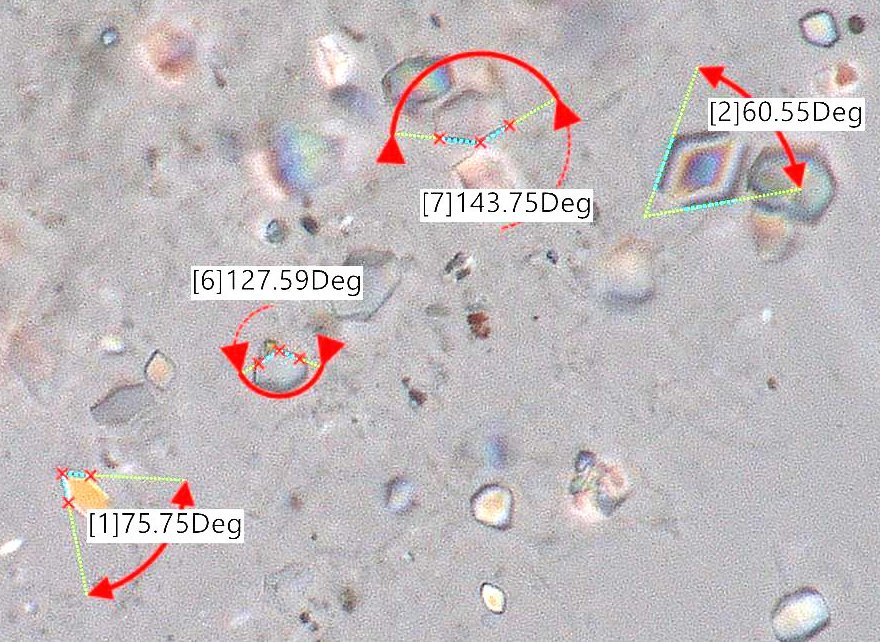
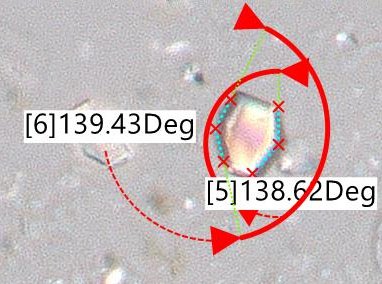
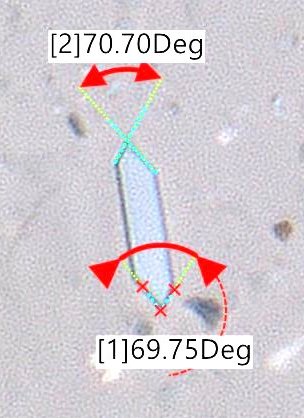
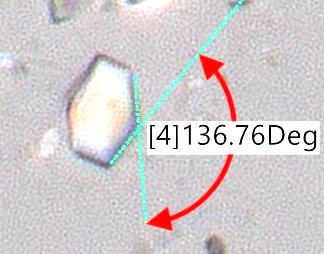
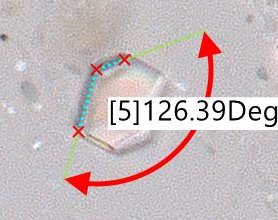
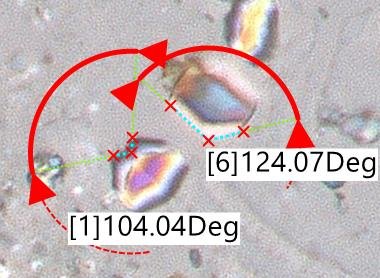

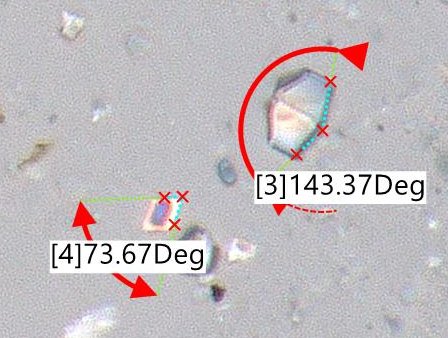
AngularityAngularity is a more subjective measure of roundness, the degree of abrasive errosion that has removed sharp corners from a particle. It has been roughly divided into five conditions; angular, subangular, subround, rounded, and well rounded. Sometimes a sixth condition is used, highly angular. . . . Highly Angular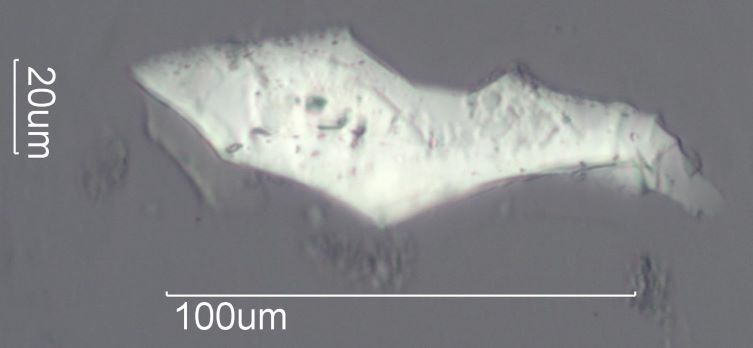
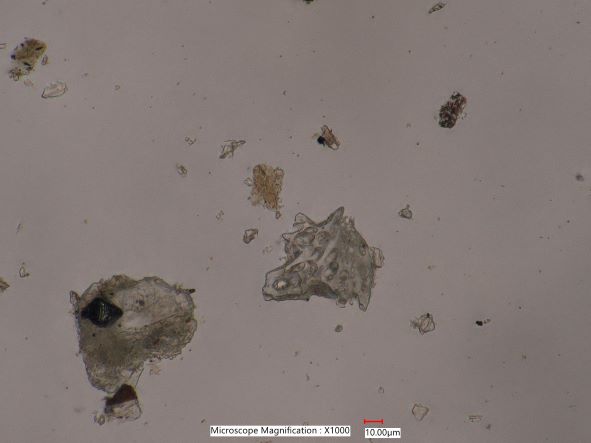
. . . Angular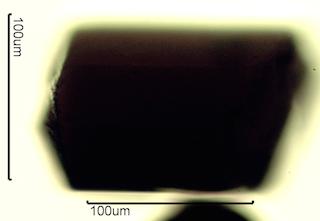
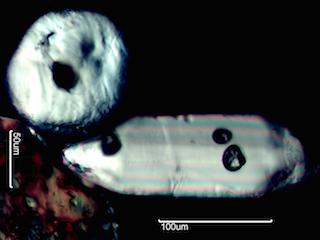
. . . Subangular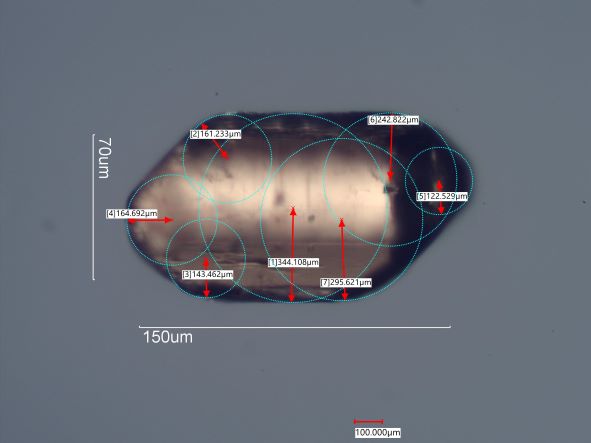
. . . Subrounded
. . . Rounded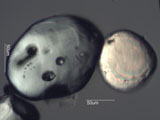
. . . Well RoundedRoundnessOne simple deffinition of roundness is the maximum ferret minus the minimum ferret of the particle. For a circle this is equal to "0". Another measure is the projected area of the particle divided by the area of the smallest enclosing (circumscribing) circle. A perfect circle would result in a value of "1". The sum of all the inclosed radii for each corner on a particle divided by the number of corners (the average radius for the sum of radii for all corners) divided by the radius of the maximum enclosed circle can result in a number of shapes being equal to a circle though they don't look like a circle. They would be neccessarily rounded. There are a number of other ways to calculate a value for roundness. The six subjective classes generally suffice but some measurements are provided below. . . . Maximum Enclosed Circle Radius/Minimum Circumscribed Circle Radius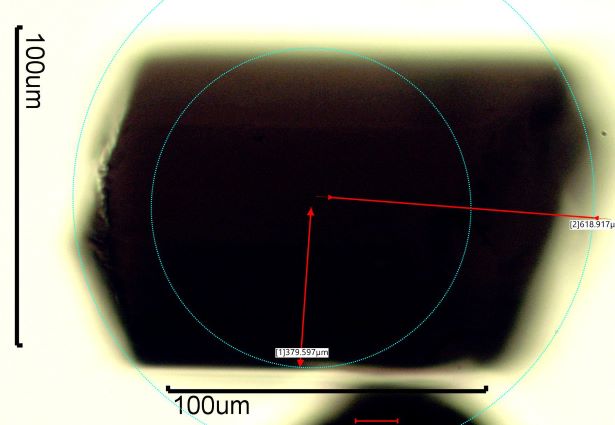

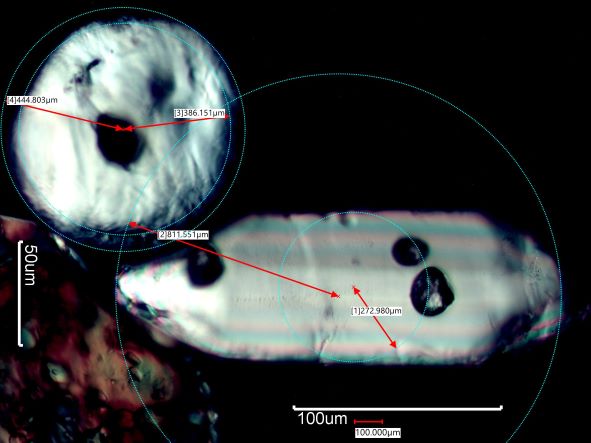
 VALUES. . . 0.61 . . . . . . . . . . . . . . 0.27 . . . . . . . . . . . . 0.82 and 0.34 . . . . . . . . . . 0.54 . . . Average Corner Radius/Maximum Enclosed Circle Radius
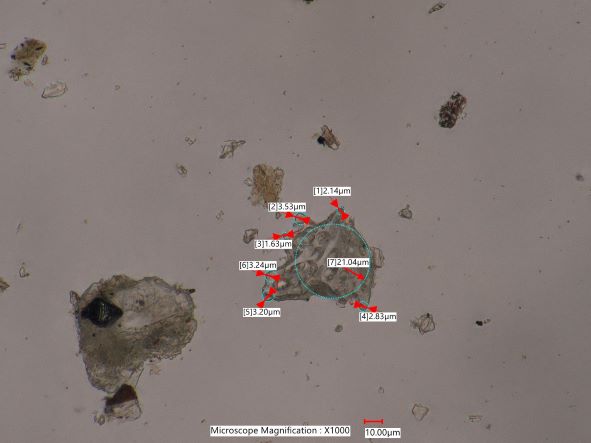
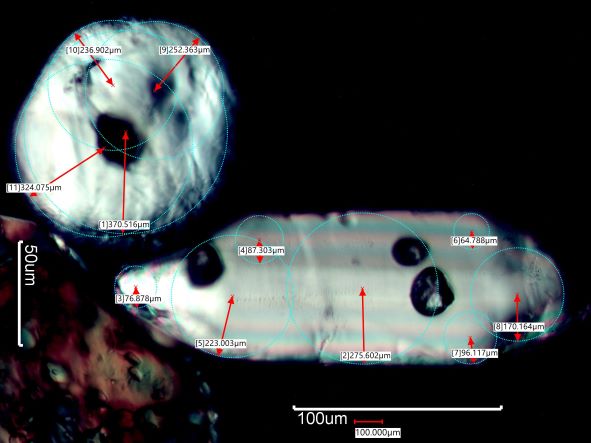
 VALUES. . . 0.17 . . . . . . . . . . . . . . 0.13 . . . . . . . . . . . . 0.73 and 0.43 . . . . . . . . . . 0.55 Surface TextureSurface texture; smooth, rough, pitted, striate, etc., can be a definitive characteristic of a type of particle. In palynology it is an important secondary feature. It is important in characterizing wear metal particles. Fractography uses the characteristic of surface texture to interpret the physical properties of a material and the nature of the forces that caused a material to break. This structure may be visible with transmitted or reflected light. . . . Smooth. . . Frosted
. . . Other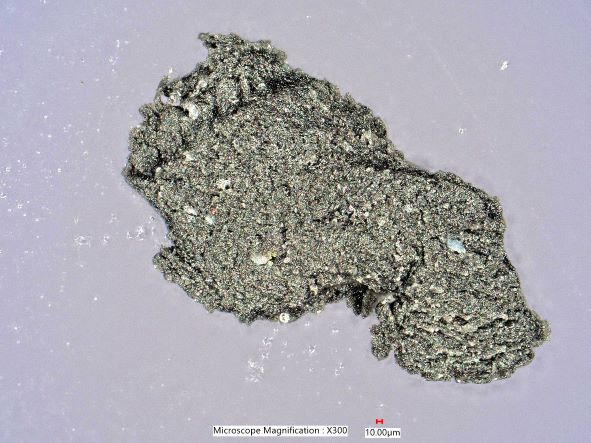
Internal TextureTransparent or translucent objects may have a definitive internal pattern that is not part of a definitive internal structure. This can be seen by transmitted brightfield, transmitted darkfield, phase contrast microscopy or reflected darkfield. . . . Transmitted Light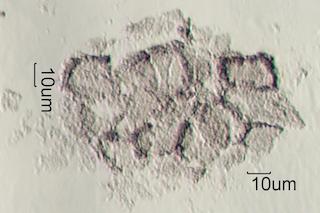
. . . Reflected Light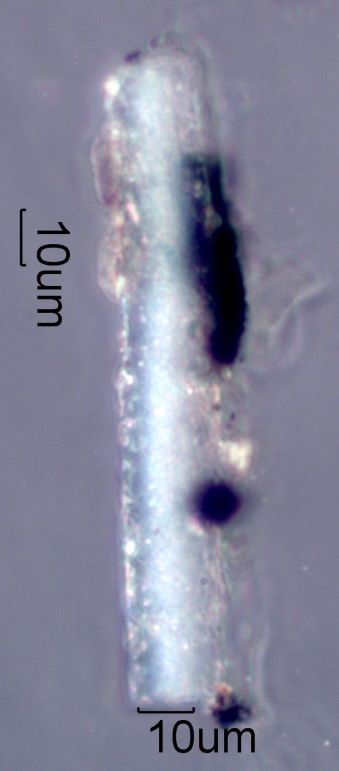
Transmitted ScatterInternal structures below the resolution power of the objective can produce transmitted light scatter. The amount of transmitted light scatter can provide information on the condition of the object. One example related to wildfire debris is the increase in transmitted light scatter as water is lost from calcium oxalate dihydrate crystals and internal crystalline defects are formed that are below the resolution limit of the light microscope but are detected by an increase in light scatter. Transmitted light scatter is most evident when the particle is view with transmitted darkfield illumination. Reflected ScatterSurface irregularities below the resolution limit of the light microscope are most apparent as light scatter seen with reflected darkfield illumination. Both opaque and transparent particles can show useful information when examined for light scatter with this type of illumination 

Surface FeaturesSurface features are often most apparent when reflected light or oblique transmitted light is used. One example is the helictical thickenings on fragments of the cell walls of some woods. Pollen is another example. Surface tecture grades into surface features as the size of the texture increases to become obvious features. Echinate textures of Caprifoliaceae pollen become distinctive surface features in the Asteraceae. 
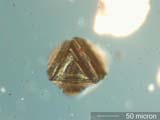
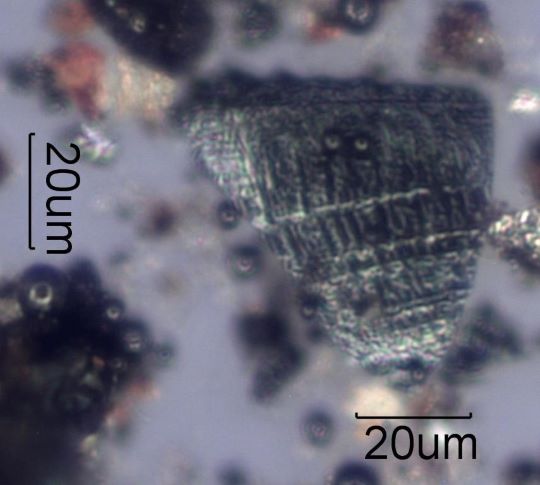
. . . Pollen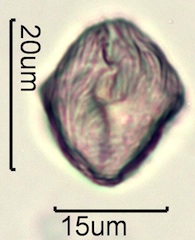
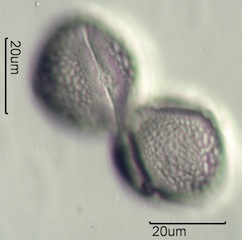

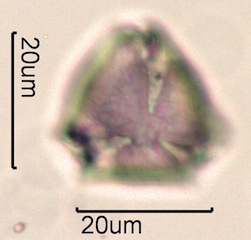
Striate, Reticulate, Echinate, Scabrate Surface Features . . . Hair Cuticle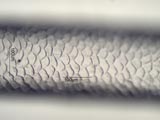
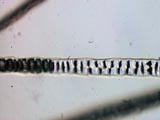

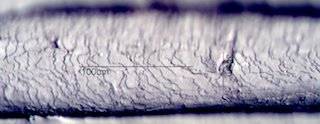
. . . Wear Metal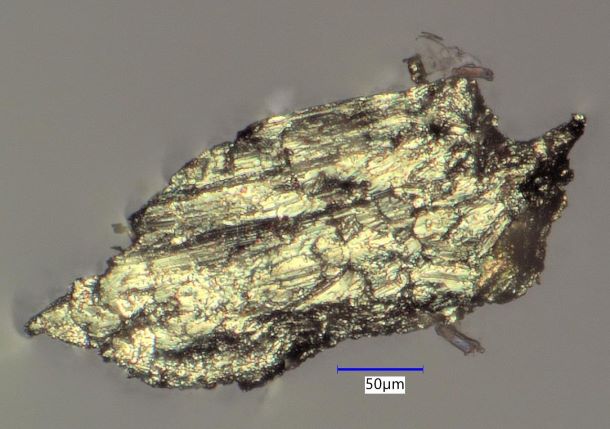
Internal FeaturesInternal features include things like crystalline inclusion, plant cell wall structures, pigment particles and crystals in fire retardant spheres, etc. Elaborate internal features important to identifying pollen plant species. Inclusions in minerals are important for characterizing the conditions under which the mineral was formed. . . . Hair Medulla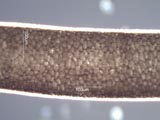



. . . Zircon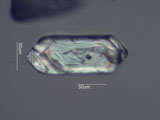
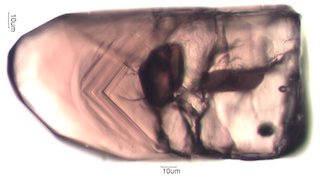


Cross-SectionTransparent particles can be optically sectioned by focusing at different levels in the particle. A common example is examining the ecto-endo wall structure of pollens when viewed in equatorial cross-section. A better understanding of crystal habit or form can be gained by slowly focusing through the crystal. Erosion or etching patterns may become apparent. Fracture SurfacesParticles often exhibit fracture surfaces. The nature of the fracture surface can reveal intrinsic structural properties of the particle. . . . Cleavage Plane. . . Parting Plane. . . Conchordal. . . Sugary. . . MixedTerminationsTerminations are characteristics of elongated structures or structures with at least one set of parallel sides. . . . Minimum AreaBrittle materials or materials with no significant tensile strength tend to break with minimal new surface area created. That is also dependent on the orientation of the applied force relative to the long axis or the material. Bending creats a tensile force on one side and a compresive force on the other. 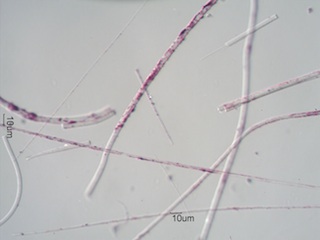
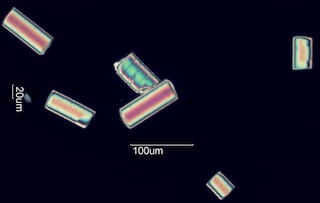
. . . Cleavage. . . PlasticSurfaces deform inellastically before failing . . . BrittleSurfaces show no evidence of plastic deformation before failure. 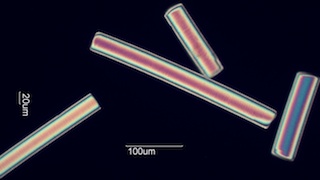

. . . BroomedBroomed terminations can be the result of high tensile strength and low compresive strength, as in the case with asbestos, or degradation of structures holding fiber bundles in place, as in the case of damage to the cuticle of hair. 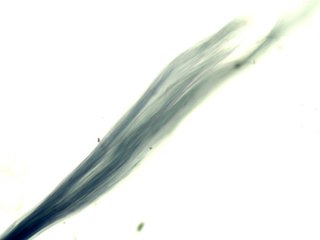
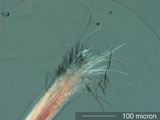
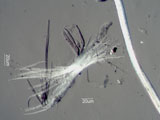
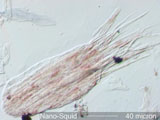
. . . SplinteredHigh tensile strength and relatively low compresive strength can result in splintered terminations. Asbestos and wood are two common examples. 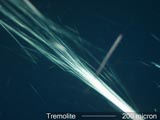
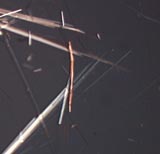
. . . Melt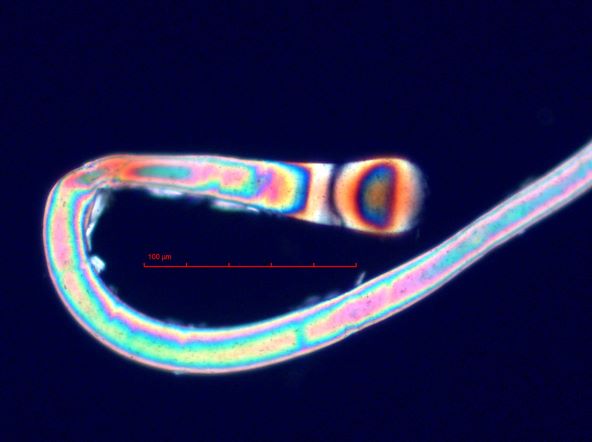
. . . Pointed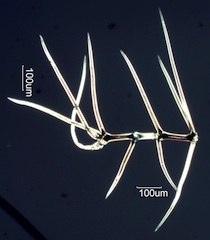
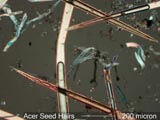

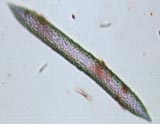
. . . OtherTerminations can be complex when they are the result of abrasion 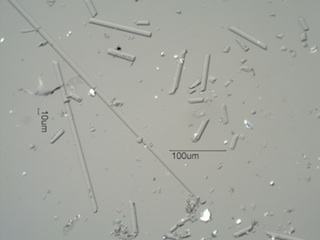
Mixed Phase StructureParticles may appear to be a single substance but when viewed with different types of illumination it becomes apparent that they have two or more different phases that make up the particle. Peristerites are an example. AgglomeratesAgglomerates are particle clusters that indicate specific activities or conditions. Agglomerates are very fragile and can only be recognized in tapelifts where the spatial distribution of the particles is retained during the sampling process. 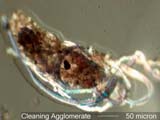
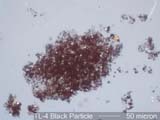
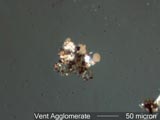

Cleaning agglomerates are particle clusters that indicate specific cleaning activities. These include dusting, damp wiping, carpet cleaning, floor striping, floor scrubbing, spray cleaners, etc. Each process is accompanied by its own characteristic agglomerate. Damp wiping results in a cluster of particles often associated with fibers from the wiping cloth. Sponge wiping results in circular collections of particles formed by the surface tension of residual droplets of water left behind. Dry wiping leaves particles aligned in the direction of the wipe with all larger particles being absent. Carpet cleaning creates a liquid aerosol of cleaning solution and particles. The liquid evaporates, which leaves little spheres of fine particles bound with the residual cleaning agent. These spheres include mixtures of fine natural minerals, shoe wear, carpet wear, humus, pollen, spores, insect parts, starch, and other common household, office, or classroom debris. Similar spheres are created by floor stripping and floor scrubbing but the agglomerate contains more isotropic material from the floor coating. The aerosol agglomerates are typically less than 50 micrometers in diameter. Spray cleaners are products that are sprayed onto surfaces and the surface is wiped. The spray creates small liquid droplets that may float to adjacent surfaces that are not being cleaned. These droplets leave small circular deposits of the cleaning agent. 
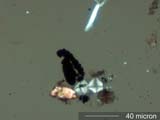
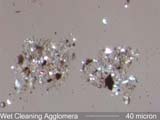


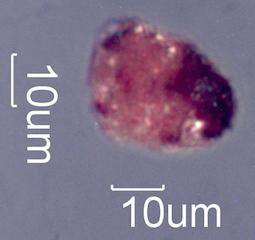
(Click here for more images in this category.) HVAC agglomerates are particle clusters that are formed in the HVAC sytem. There are two basic sources for these particles. One is the filter medium where the particles are agglomerated on the surface of the filter. These particles are knocked loose during filter change-out or if a hole is created in the filter. The other source is the slow accumulation of particles on the wall of the HVAC duct. These particles start typically as diffusional deposits. As they first accumulate on the wall they create an isolated stactic charge. This attracts more particles and the agglomerate begins to grow. It continues to grow until its mass is sufficient that vibration in the duct jars the agglomerate free and it becomes part of the air stream. These agglomerates are generally dominated by soot particles and are quite dark in appearance. At times they may be dominated by a local activity, such as remodeling, and take on a different appearance. Agglomerates That form in the recycle loop of the HVAC system will include skin flakes and typical indoor particles rather than the pollens, fine minerals, insect parts, tire wear, etc. associated with the fresh air supply duct. 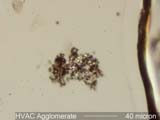

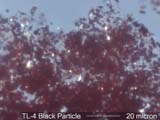

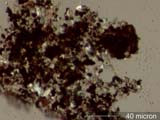
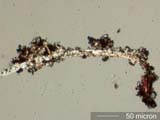
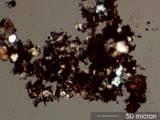
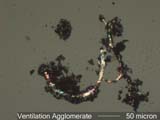
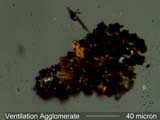
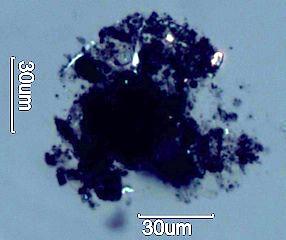
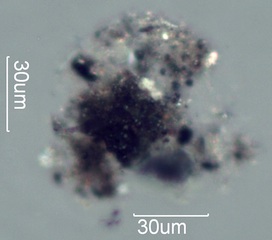
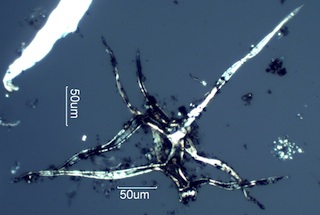
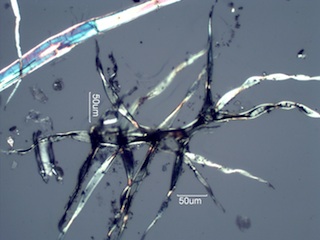
(Click here for more images in this category.) Remodeling agglomerates are particle clusters that indicate remodeling activities. These particles may agglomerate during a cleaning activity or they may agglomerate in the HVAC system. Their characteristic property is that they consist of particles like plaster, paint spheres, glass fiber, sawdust, and other particles associated with the remodeling activity. These particles may be associated with health complaints. 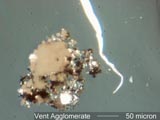

Wet road agglomerates are particle clusters that include tire wear, road debris, pollens, and other particles commonly found on the surface of roads. The road debris may be from asphalt or cement roads. These particles are the road spray residues formed when the road is wet and the normal road debris is agglomerated rather than free floating. 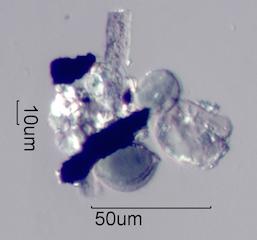


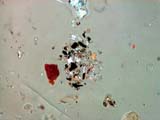
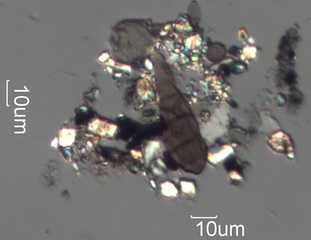
(Click here for more images in this category.) SymmetrySymmetry through the microscope tends to be reduced to two dimensional symmetries. There are basically two classes of symmetries. There are rotational symmetries and organizational symmetries. Crystals and regular geometric forms have symmetries where on one or two axis rotations the positoions are indistiguishable. these include two-fold, three-fold, four-fold, five-fold, six-fold, mirror, and point symmetries. Many life-forms have symmetries where a part is approximately mirrored by other parts of the structure. Leaves are a common example. one side is duplicated on the other side across from it. This is not a rotational symmetry. Rotating the leaf on its symmetry axis would first exchange the top of the leaf with the bottom of the leaf, which is not equivalent. It is a type of approximate mirror symmetry. The symmetries detected may help identify a crystal system or a life form. . . . Two-Fold or BisymmetryA square has has 4 two-fold axes. A rectangle has 2 two-fold axes. These are rotaion Many life forms are bisymmetric. They have a one fold axis where right and left sides are approximately duplicated. 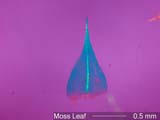


. . . Three-Fold Symmetry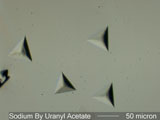
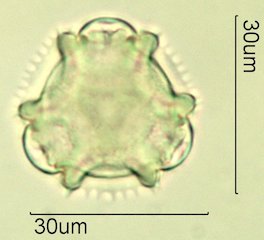
. . . Four-Fold Symmetry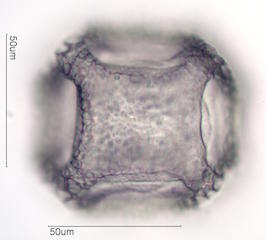
. . . Five-Fold Symmetry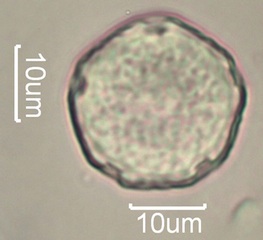
. . . Six-Fold Symmetry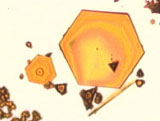
. . . Mirror Symmetry. . . Point SymmetryVisibility vs ResolutionThe resolution of objects viewed through the light microscope is a calculated value based on configuration of the microscope. Visibility is a function of contrast. To take advantage of resolution there must be sufficient contrast to see the subject but objects far below the resolution limit of a specific microscope configuration can be made visible with sufficient contrast. This is the same phenomena that allows us to see the stars in the night sky, all of which are far below the resolution limit of our eyes. A few examples through the microscope are provided below showing methods of improving the resolution and/or visibility of objects viewed through the "standard" light microscope. Click on the photographs below for more information. 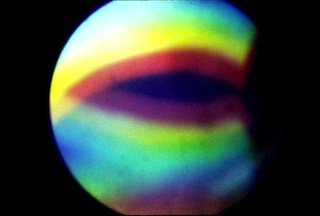
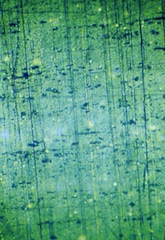
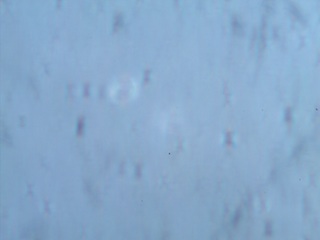
Brightfield vs Darkfield Illumination
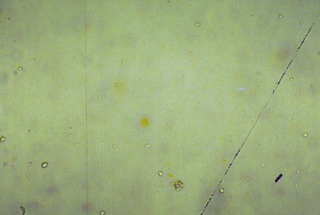
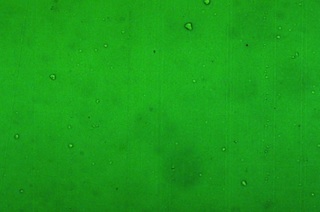


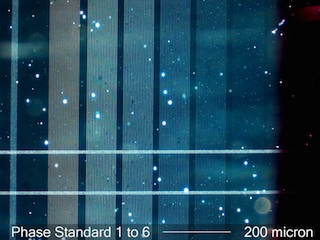
Brightfield vs Oblique Illumination

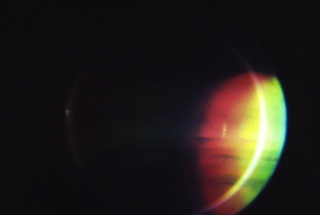
TN.jpg)

Phase Contrast vs Visibility Through the Microscope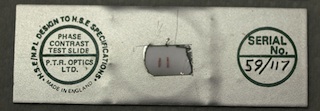


Polarized Light vs Visibility Through the Microscope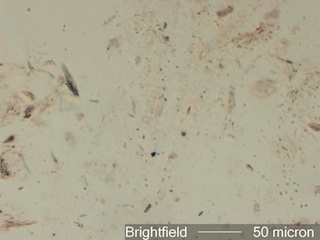
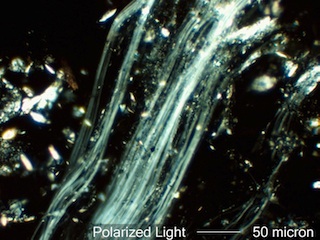
Asbestos Fibers and Visibility Through the Light Microscope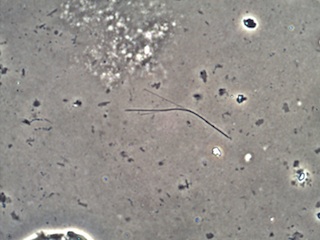
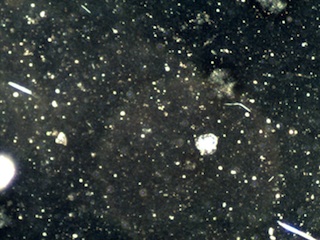
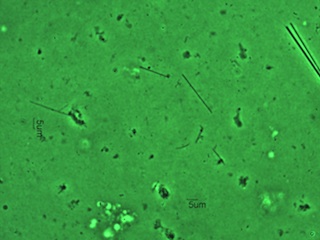
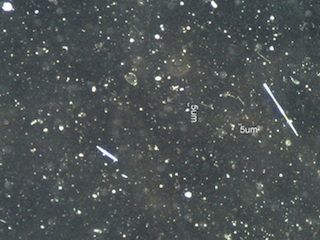

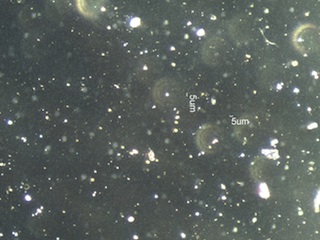

|

